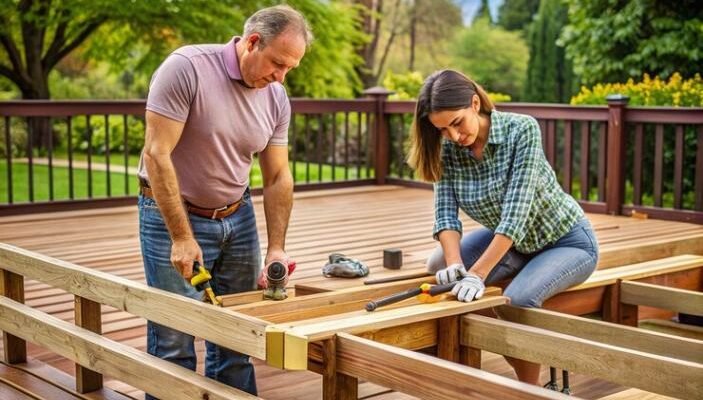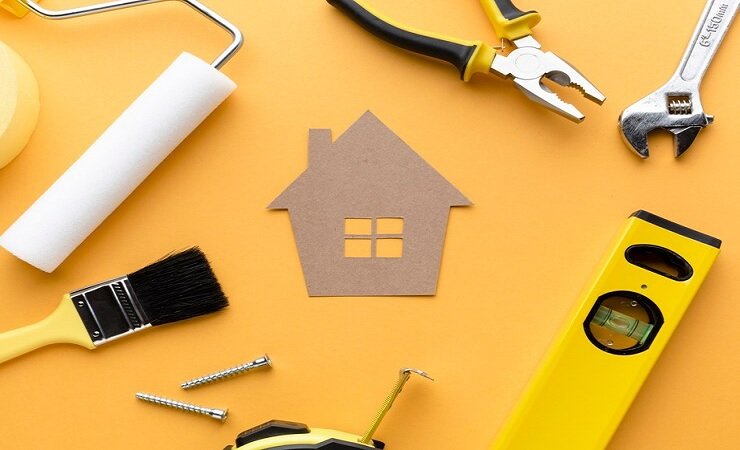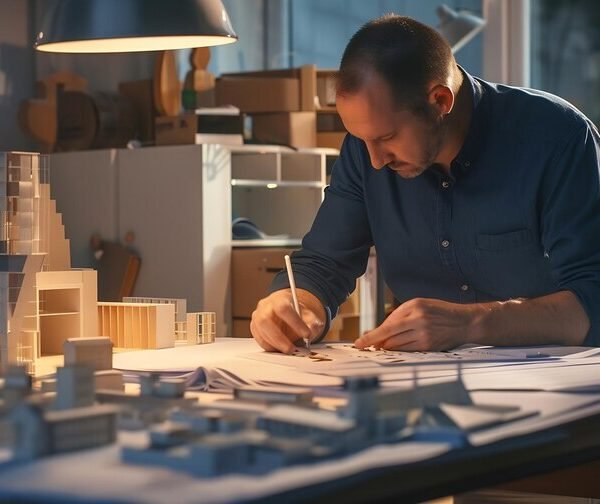Home Improvement Community Benefits: What Are They
Did you know that your home renovations could have a ripple effect far beyond your property lines? In today’s interconnected world, something as simple as a kitchen remodel or a fresh coat of paint can contribute to the well-being of your entire community.
Home improvement projects aren’t just about enhancing personal living spaces; they’re catalysts for positive change that can improve health, drive economic growth, foster community development, and promote environmental sustainability.
Key Takeaways:
- Home improvement projects have far-reaching benefits for entire communities.
- Renovations can improve health outcomes, create jobs, and boost local economies.
- Environmentally-friendly home upgrades promote sustainability.
- Homeowners and renters can play a role in supporting community development through home improvement initiatives.
Understanding Community Benefits in Home Improvement
Home improvement may seem like a personal endeavor, but its impact extends far beyond individual households. When homeowners and renters invest in their properties, they’re doing more than just enhancing their living spaces; they’re contributing to the overall well-being of their communities.
Key components of community benefits in home improvement include:
- Health and wellness: Improvements that address safety hazards, promote energy efficiency, and create healthier living environments can positively impact community health outcomes.
- Economic growth: Home renovation projects stimulate local economies by creating jobs, driving spending, and increasing property values.
- Community development: Initiatives that engage local stakeholders, promote partnerships, and address community needs can strengthen social cohesion and improve living conditions.
- Environmental sustainability: Energy-efficient upgrades, green building practices, and responsible material sourcing can reduce a community’s environmental footprint.
The importance of understanding these community benefits cannot be overstated. By recognizing the far-reaching impact of home improvement, homeowners and renters can make informed decisions that not only enhance their personal spaces but also contribute to the greater good.
Home Improvement and Health
Imagine a community where residents can breathe clean air, access safe drinking water, and live in homes free from hazardous materials like lead and mold. This vision can become a reality through home improvement projects that prioritize health and wellness.
Here are some key components of home improvement for health:
- Renovations: Addressing structural issues like leaks, drafts, and poor insulation can improve indoor air quality and prevent the growth of harmful mold and bacteria.
- Maintenance: Regular upkeep, such as replacing air filters and testing for radon, can mitigate health risks and ensure a safe living environment.
- Energy efficiency: Upgrading to energy-efficient appliances, windows, and HVAC systems can reduce indoor air pollution and improve overall air quality.
By investing in these types of home improvement projects, homeowners and renters can contribute to improved community health outcomes. Healthier homes lead to fewer missed workdays, reduced healthcare costs, and overall improved quality of life for residents.
Home Improvement and Economic Growth
When you hire a local contractor for a home renovation project, you’re not just improving your living space; you’re also supporting economic growth in your community. Here’s how home improvement drives economic development:
- Job creation: Home improvement projects provide employment opportunities for contractors, construction workers, and skilled tradespeople, many of whom are local residents.
- Local spending: Homeowners and renters often purchase materials, appliances, and furnishings from local businesses, injecting money into the local economy.
- Property values: Well-maintained and upgraded homes can increase property values, boosting tax revenues and attracting new residents and businesses to the area.
Investing in home improvement projects is a win-win situation. Not only do homeowners and renters enjoy the personal benefits of upgraded living spaces, but they also contribute to the economic vitality of their communities.
Home Improvement and Community Development
Beyond health and economic impacts, home improvement initiatives can play a crucial role in fostering community development. When homeowners, renters, and local organizations collaborate on improvement projects, they can address specific community needs and strengthen social bonds.
Key components of home improvement for community development include:
- Community engagement: Involving residents in the planning and execution of home improvement projects can promote a sense of ownership and pride in the community.
- Local partnerships: Collaborating with community-based organizations, non-profits, and local businesses can ensure that improvement efforts align with the unique needs and priorities of the community.
- Workforce development: Home improvement projects can provide opportunities for job training and apprenticeships, empowering community members with valuable skills and improving economic mobility.
By prioritizing community development in home improvement initiatives, residents can create a more cohesive, inclusive, and supportive environment for all.
Home Improvement and Environmental Sustainability
As concerns about climate change and environmental degradation continue to grow, it’s essential to consider the impact of home improvement projects on the planet. Fortunately, many home upgrades can contribute to environmental sustainability while also improving personal living spaces.
Here are some key components of home improvement for environmental sustainability:
- Energy efficiency: Upgrading to energy-efficient appliances, insulation, and HVAC systems can significantly reduce a home’s carbon footprint and lower utility costs.
- Green building practices: Incorporating sustainable materials, such as recycled or locally sourced products, and implementing water conservation measures can minimize a home’s environmental impact.
- Renewable energy: Installing solar panels or other renewable energy systems can reduce reliance on fossil fuels and promote a cleaner, greener community.
By embracing environmentally-friendly home improvement practices, homeowners and renters can play a crucial role in creating a more sustainable future for their communities.
Conclusion
Home improvement is more than just a personal endeavor; it’s a powerful tool for fostering community benefits. Whether it’s improving health outcomes, driving economic growth, strengthening community development, or promoting environmental sustainability, the ripple effects of home renovations extend far beyond individual properties.
As we move into 2023 and beyond, it’s crucial for homeowners, renters, and local organizations to recognize the importance of home improvement in creating thriving, resilient communities. By investing in responsible, community-focused home improvement projects, we can collectively contribute to the well-being of our neighborhoods, cities, and the planet as a whole.
So, the next time you consider a home renovation project, remember that your efforts have the potential to impact far more than just your personal living space. Embrace the opportunity to be a catalyst for positive change, and let’s work together to build stronger, healthier, and more sustainable communities, one home improvement project at a time.











